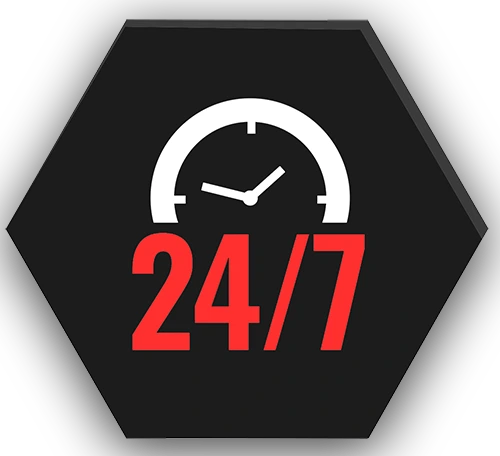When your ductless AC starts blowing warm air in the middle of a Salt Lake City summer, it’s more than just an inconvenience. It makes daily life uncomfortable and can leave your household relying on fans and open windows just to stay cool. What makes it more frustrating is that the unit may seem to be running fine — the lights are on, it’s making its usual sounds — but the air coming out isn’t helping relieve the heat.
Before jumping to conclusions or assuming it’s time to replace the entire system, take a few minutes to troubleshoot some common causes. Many of the reasons your ductless AC may be pushing out warm air can be reversed with some simple inspections and actions. Knowing what to look for can help you avoid bigger problems and keep your house cool without delays.
Check the Thermostat Settings First
One of the first things to check is the thermostat setting. It might seem obvious, but it’s actually a common issue, especially when different household members adjust the settings without realizing it. If your thermostat is set to “fan” mode instead of “cool,” your system will still run, but it won’t give you any cold air. Instead, it just recirculates the air that’s already in your home, which can feel warm or stale.
Here’s what you’ll want to do:
– Make sure the thermostat is set to “cool,” not “fan” or “heat”
– Lower the temperature a few degrees to see if the system responds
– Double-check that the remote or wall control for your ductless unit is working properly
– Look out for error codes on the display, which can suggest a deeper issue
If your thermostat is correctly set and the unit still blows warm air, it’s a sign the problem is somewhere else in the system.
Inspect the Air Filters for Blockage
Dirty or clogged air filters are another leading reason your ductless AC might not be cooling correctly. Over time, dust and debris collect on filters and reduce how much air can pass through the unit. This makes your AC work harder and can eventually cause it to blow lukewarm or warm air instead of cool air. In Salt Lake City, with spring pollen and summer dust swirling around, this buildup can happen faster than you might expect.
To inspect and clean your ductless unit’s filters:
1. Turn off the power to the unit for safety
2. Open the front panel to access the filters
3. Gently remove the filters without forcing them
4. Rinse the filters with clean water and let them dry fully before reinstalling
5. If the filters are torn, damaged, or too dirty to clean, replace them
Keeping the filters clean can improve cooling performance and extend the life of your ductless system. A clean filter allows proper airflow, helping the system cool your space more efficiently. If your filters are in good shape and the air’s still warm, it may be time to look beyond the indoor unit.
Check the Outdoor Unit for Obstructions
If your indoor unit seems to be working and the filters are clean, it’s time to take a look outside. The outdoor condenser unit plays a huge role in pushing heat away from your home. When airflow around it is blocked, the system can’t release heat effectively. That airflow is needed to keep the refrigerant cycle working. Without it, your ductless AC may end up cycling warm air right back into the house.
Clear away these common issues:
– Leaves, grass clippings, or debris piled up around the unit
– Shrubs or bushes growing too close to the sides
– Dirt buildup on the fins or coil
– Lawn furniture or tools that lean against or block the cabinet
The area around the outdoor unit should have at least a few feet of open space all around. You can use a garden hose with light pressure to rinse dirt off the exterior, but don’t try opening or disassembling anything. If airflow seems fine but there’s still no cold air, then the problem could be with the internal parts or refrigerant levels.
Low Refrigerant Means Low Cooling
Refrigerant is what makes the cooling cycle happen inside your ductless AC. When the refrigerant level drops, which can happen from a leak or gradual depletion, the system loses its ability to remove heat from your indoor air. That’s when you’ll start to feel warm or even humid air blowing out, even with everything else turned on correctly.
Signs that refrigerant might be low:
– Ice building up on the indoor or outdoor coil
– A hissing sound near the lines or joints
– The system running longer without meeting the set temperature
This kind of problem isn’t something that can be refilled casually like topping off car fluids. Refrigerant systems are sealed, and any leak should be repaired before refilling. That involves safely capturing the existing refrigerant, sealing the leak, and then charging the unit with the precise amount it needs. Only licensed HVAC professionals can do this correctly and legally, which is why it’s important not to delay calling for help.
Address Electrical Issues That Disrupt Operation
Sometimes it’s not a mechanical issue that causes a ductless AC to underperform. Electrical problems are another common trigger for cooling trouble. The system has multiple electronic components—relays, wiring, control boards—that all need to work together. If one part fails or power is interrupted, it can stop the cooling process or cause the unit to run inefficiently.
Watch for these signs:
– Tripped circuit breakers or blown fuses
– The system powers on and off without reaching the correct temperature
– Flickering lights on the control panel or remote
– No response from the AC when pressing the power button
Although it might be tempting to reset breakers or toggle power off and on, these steps will only help if the problem is minor. If the issue returns or if anything appears damaged or burnt, it’s time to contact our technicians. Electrical failures can get worse with time and even become a safety hazard if not handled properly.
A Skilled Technician Can Pinpoint the Issue
When you’ve gone through the basics—thermostat settings, air filters, unit inspection—and your system still isn’t performing, don’t spend more time guessing. Our technicians have the experience and tools to narrow down what’s wrong and fix it without delay. Whether it’s a refrigerant leak, internal block, or failing component, a thorough inspection is the only way to be sure.
Trusting a qualified technician helps make sure nothing gets overlooked. It also protects your equipment from further damage that could happen if a fix is delayed or attempted incorrectly. Even if your system is new, small issues can sneak up, especially during summer months when AC systems in Salt Lake City are working nonstop.
Stay Comfortable When the Heat Kicks In
When your ductless AC blows warm air, it’s more than uncomfortable. It’s stressful, especially during the hottest days in Salt Lake City. Taking time to spot and address minor problems early can help avoid bigger breakdowns later. From thermostat settings to dirty filters and outdoor clogs, the issues often start small but worsen with time.
Keeping the system performing well takes attention, just like with any home appliance. But when problems go beyond the basics, the best move is to bring in trained help. Prompt service isn’t just about cooling your home faster. It’s also about protecting the lifespan of your equipment and keeping things running smoothly all season.
If your ductless AC continues to cause discomfort during the summer in Salt Lake City, it may be time to have our professionals assess the system for underlying issues such as a refrigerant leak or electrical fault. For a complete evaluation and a prompt fix that restores reliable cooling, schedule a service for ductless AC repair in Salt Lake City and let Jones Heating & Air Conditioning help maintain your home’s comfort. For a quick estimate or to book a service visit, please contact us today.



